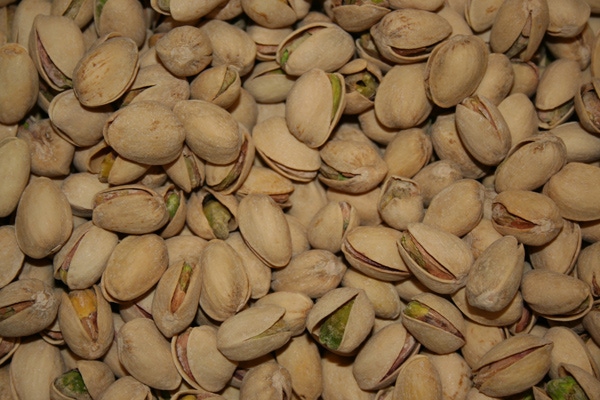February 2, 2016

About a month has passed since the calendar advanced to 2016. But already, thanks to colder, wetter weather, the new year is looking much more promising for American pistachio growers than the last one.
“In terms of crop size 2015 was a terrible year,” says Richard Matoian, executive director of American Pistachio Growers (APG).
That’s when continuing drought and insufficient winter chilling hours combined to cut grower returns by reducing the size of the U.S. crop more than 40 percent from early-season projections to just 275 million pounds (in-shell).
California accounted for 98 percent of the production, or 271 million pounds.
Last year, judging by the number of newly-forming nuts shortly after bloom, observers saw the potential for a crop size of about 500 to 550 million pounds. However, that was before the impact of last winter’s low chilling hours could be assessed.
Pistachio trees need at least about 800 hours of chilling for timing of the bloom of male and female trees to overlap properly. Otherwise, pollination rates suffer and nuts fail to form inside the shell.
For the latest on western agriculture, please check out Western Farm Press Daily and receive the latest news right to your inbox.
“Growers didn’t see the impact of that until kernels were filling in late June and early July,” Matoian says. “When they cut through the shells, they found a high percentage of blanks.”
With the decline in production last year, growers also saw their revenues drop. Any increase in prices they might have expected from a smaller crop – assuming no fall off in consumer demand – was more than offset by a huge crop in Iran, the second in a row for America’s main competitor in the international pistachio market.
Currently, wholesale prices for pistachios are down about 5 percent from year-earlier levels, Matoian notes.
Until Iran moved from second in pistachio production to top place with its 2015 crop, U.S. growers had led the world in pistachio production since 2008.
As the 2015 American crop was shrinking so was the demand from China, which had been the largest export market for U.S. production. Until last year, Chinese buyers had been purchasing one of every four pistachio nuts grown in the U.S. for several years.
In fact, in 2014, American growers sold 122 million pounds of pistachios to China. Last year that figure nose-dived to 65 million, Matoian reports. The souring economy in China played a role in that by helping to curb demand.
However, the price of Iranian pistachios was also a factor.
“To help move their large 2015 crop, Iranian processors have been selling pistachios to Chinese buyer at 80 cents to a dollar a pound under wholesale,” he says.
Matoian says while American growers weren’t happy about last’s crop, they’re being pretty optimistic about this year’s production prospects.
One big reason is that the number of winter chill hours in California’s pistachio orchards is up to where they need to be for proper pollination and nut formation, he explains. Another is the rain that has been falling over much of the San Joaquin Valley this winter.
However, in late January, Craig Kallsen, University of California Cooperative Extension farm advisor for Kern County, wasn’t quite as optimistic about the amount of winter chilling in his area as he was earlier in the winter.
That was before Kern County missed out some of the rainfall other California pistachio areas received, and before some warm fronts that came through the area over a two-week period earlier in January, producing very little in the way of rain and chilling.
“In general, with respect to winter chilling in Kern County, we are much better off than last year, but some areas are still borderline,” Kallsen says. “Also, I am concerned about the lack of flower buds on trees just coming into bearing (6th, 7th and 8th leaf trees) in some of the warmer areas of the county.”
This lack of flower buds on younger trees may be a carry-over problem from the run of low-chill years, he says.
“We have seen this before in the foothill citrus-belt where young trees seem to remain in a vegetative state.”
Still, Matoian expects American pistachio growers will enjoy a stronger competitive position internationally.
“Hardly any one expects Iran to have a third straight big crop this year,” he notes.
And, when it comes to competing against any lower-priced pistachios in world markets, American growers hold an ace or two up their sleeves.
“Pistachios grown here are consistently safer and higher in quality,” Matoian says. “That’s particularly important to European consumers, who represent a significant export market for our product.”
Meanwhile, Matoian adds that continued growth in membership numbers and volume of pistachio production they represent, strengthens the ability of APG to build on its success in stimulating demand by promoting the nutritional and health benefits of pistachios to consumers around the world.
You May Also Like




